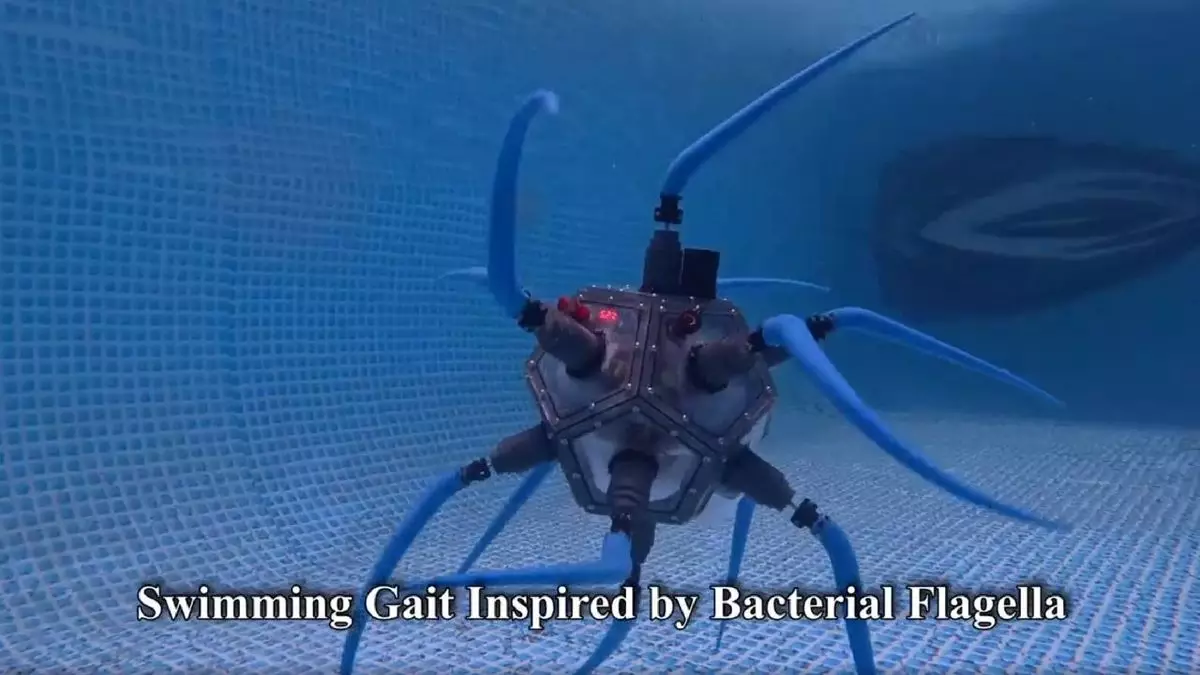Growing up, aquatic endeavors weren’t particularly my forte. Despite attending numerous swim classes and frequent visits to the pool, I remained a captive of the shallow end, flailing awkwardly like a fish out of water. As my contemporaries glided through the depths effortlessly, I found myself wrestling with the water like an octopus tangled in its own tentacles. It often struck me as ironic — if cephalopods could navigate the ocean with their unique designs, why was I struggling so much with my cerebral abilities? Delving into the world of robotics has provided an answer to my youthful quandary, particularly with the development of a ‘soft’ robot designed for underwater travel known as the ZodiAq.
The Ingenious Design of ZodiAq
The ZodiAq isn’t just any underwater drone; it represents cutting-edge technology that mimics the fluid dynamics of marine life. This impressive invention is equipped with twelve flexible, flagella-like limbs that facilitate both swimming and crawling across the sea floor. Unlike traditional rigid-bodied machines, the ZodiAq’s soft-body structure promises an added level of grace, ensuring that it moves with minimal disruption to its surroundings. Imagine quietly gliding through a vibrant coral reef without disturbing its inhabitants — this drone brings a new meaning to stealth underwater exploration.
The engineering behind ZodiAq is particularly noteworthy. It utilizes a clever ballast system that adjusts its center of gravity, enabling the drone to maintain submersion. Additionally, each of its twelve limbs operates on a separate motor, orchestrated via an onboard Raspberry Pi. This allows for precision in movement and adaptability to varying underwater terrains.
Moreover, the drone is equipped with a suite of onboard sensors that monitor vital environmental metrics like temperature and humidity, providing feedback on both internal conditions and the external environment. The presence of an Inertial Measurement Unit ensures that the drone maneuvers smoothly without crashing into obstacles.
An Impressive, Yet Intimidating Presence
From an observer’s standpoint, the ZodiAq is both captivating and slightly unnerving. For those who have experienced the realm of video games like *Subnautica*, the drone might evoke the same exhilarating dread of venturing too deep into uncharted waters. However, its operational parameters suggest that it poses no real threat. With a maximum speed that translates to a leisurely two body lengths every fifteen seconds, one could argue that the ZodiAq is more akin to a friendly companion rather than a daunting predator of the deep.
Much like nature itself, the ZodiAq’s design incorporates redundancy. Should a motor fail, it can still navigate home with sufficient functional limbs, an ingenious safeguard that echoes the resilience found in biological organisms.
Beyond the Sea: The Broader Implications of Biomimicry
What strikes me about the development of the ZodiAq is how it reflects a growing trend in robotics: biomimicry. As researchers increasingly draw inspiration from the natural world, the lines between biology and technology are becoming increasingly blurred. MIT’s recent explorations into ‘meat robots’ illustrate this concept further, exemplifying the endless possibilities that occur when we look to nature for design inspiration.
While many tech advancements focus on enhancing day-to-day convenience, the ZodiAq poses a compelling argument for functionality over flashiness. In an era rife with commercial gadgetry that often feels superficial or gimmicky, the ZodiAq stands out as a practical tool with great potential for scientific discovery and environmental conservation.
A Step Towards Sustainable Exploration
The ZodiAq’s development has significant implications for marine biology and ecological research. By utilizing technology that minimizes disruption to marine ecosystems, it champions the possibility of exploring underwater environments without leaving a detrimental impact. This philosophy aligns with evolving perspectives on conservation, where understanding and preserving nature takes precedence over unsustainable exploitation.
Furthermore, the ZodiAq could facilitate research in previously inaccessible areas of the ocean, unveiling secrets of marine life that have long remained obscured. The potential for discovery is immense — from uncovering new species to understanding how changing climates impact underwater ecosystems. Such undertakings could catalyze greater awareness and action in safeguarding our oceans.
The ZodiAq embodies what the fusion of technology and nature can achieve. It not only inspires awe but also prompts self-reflection on our relationship with the natural world, reminding us that in striving for innovation, we can create tools that respect and preserve the very ecosystems we seek to explore.

